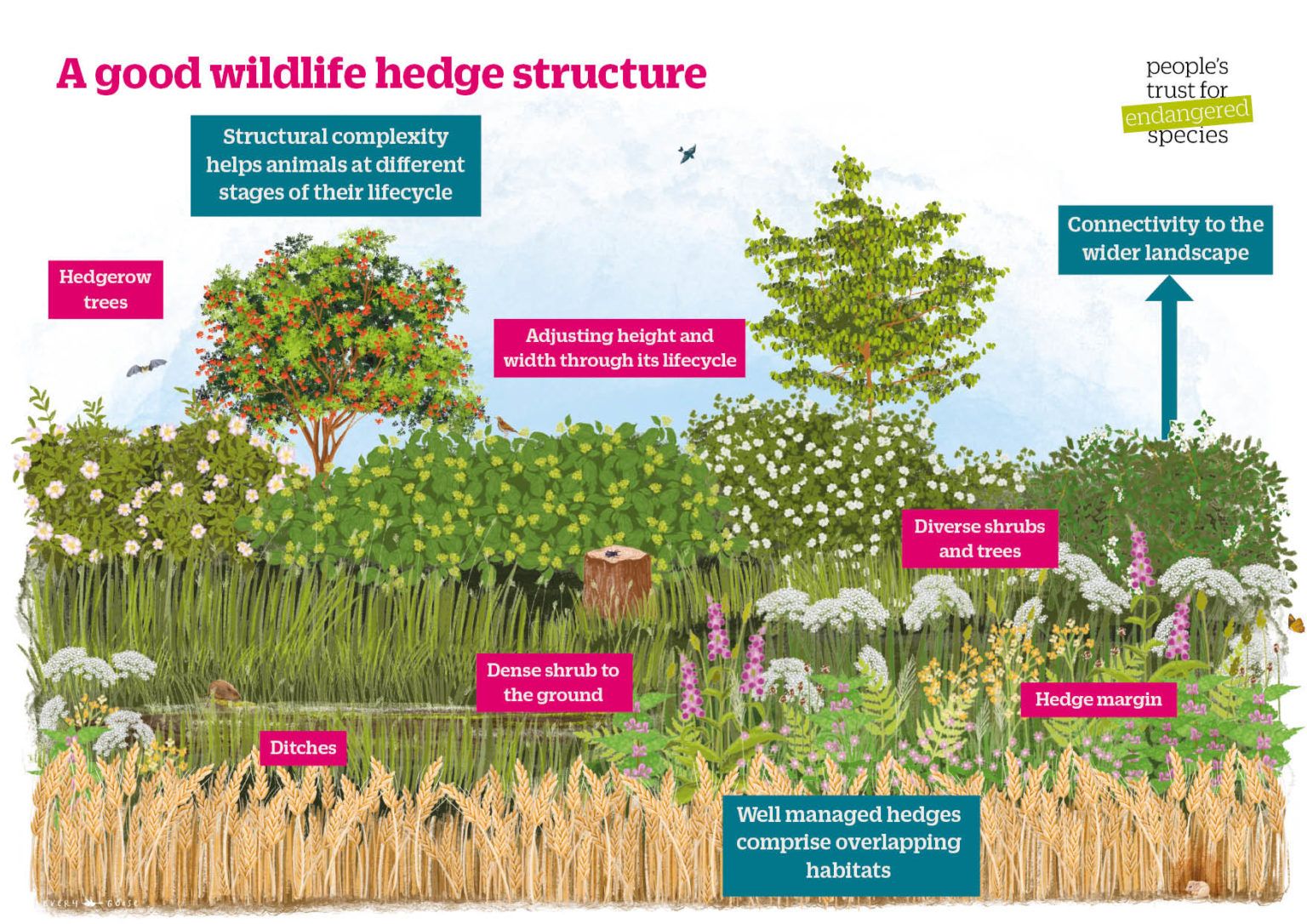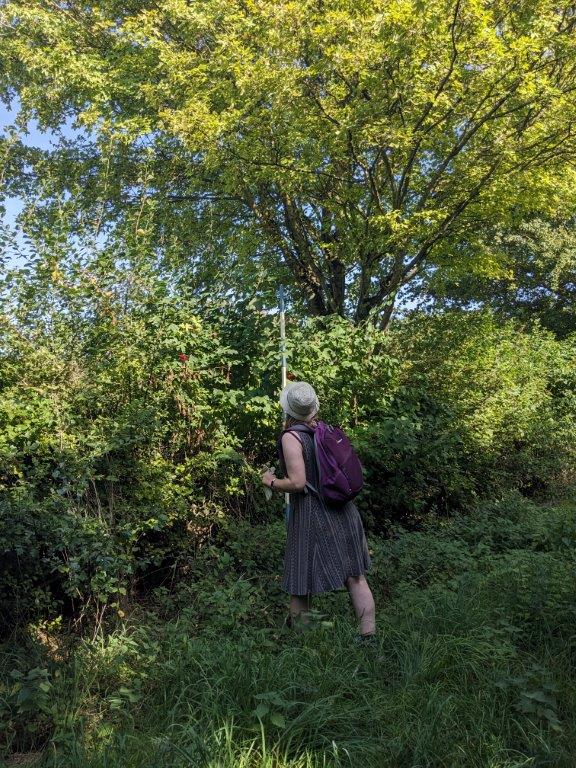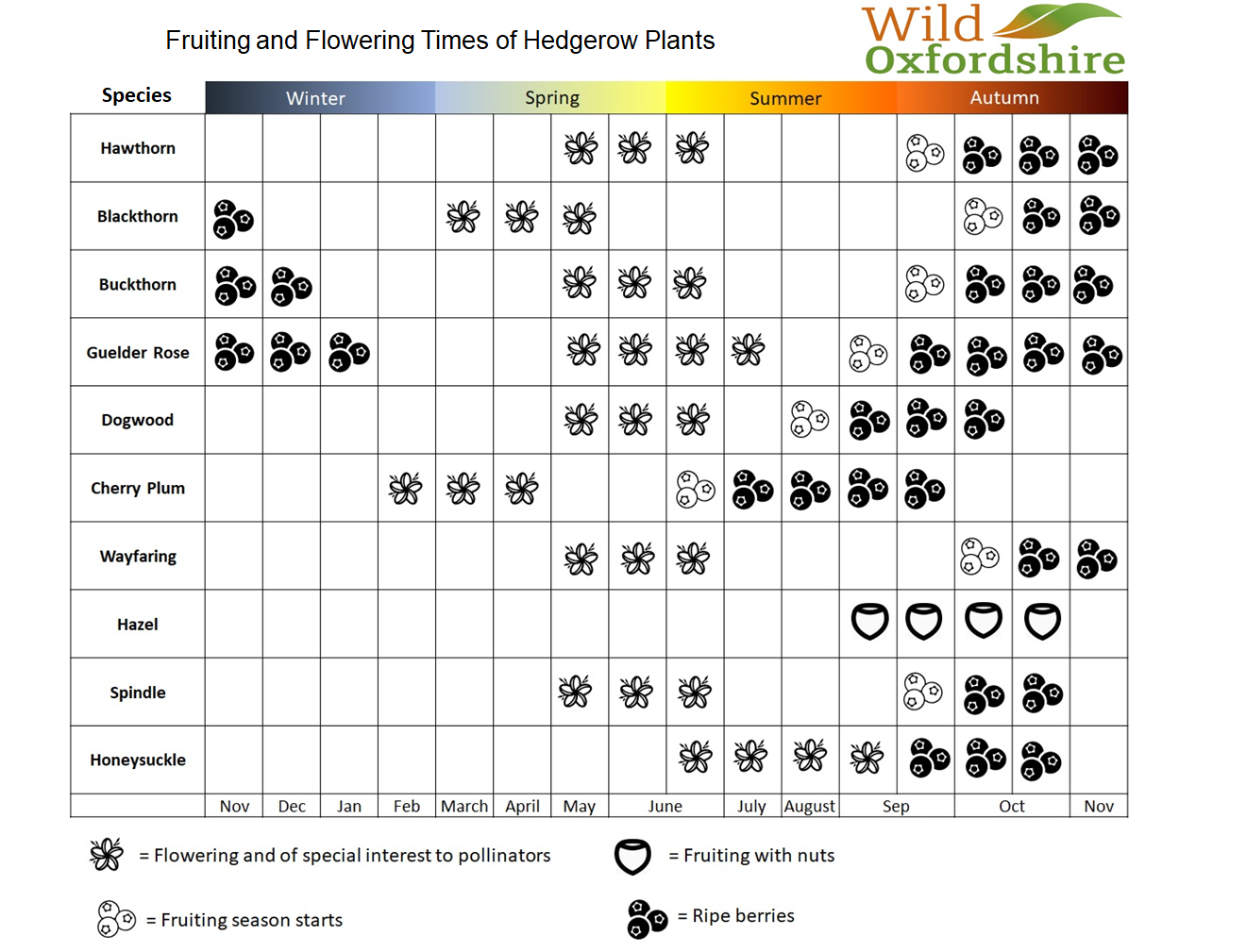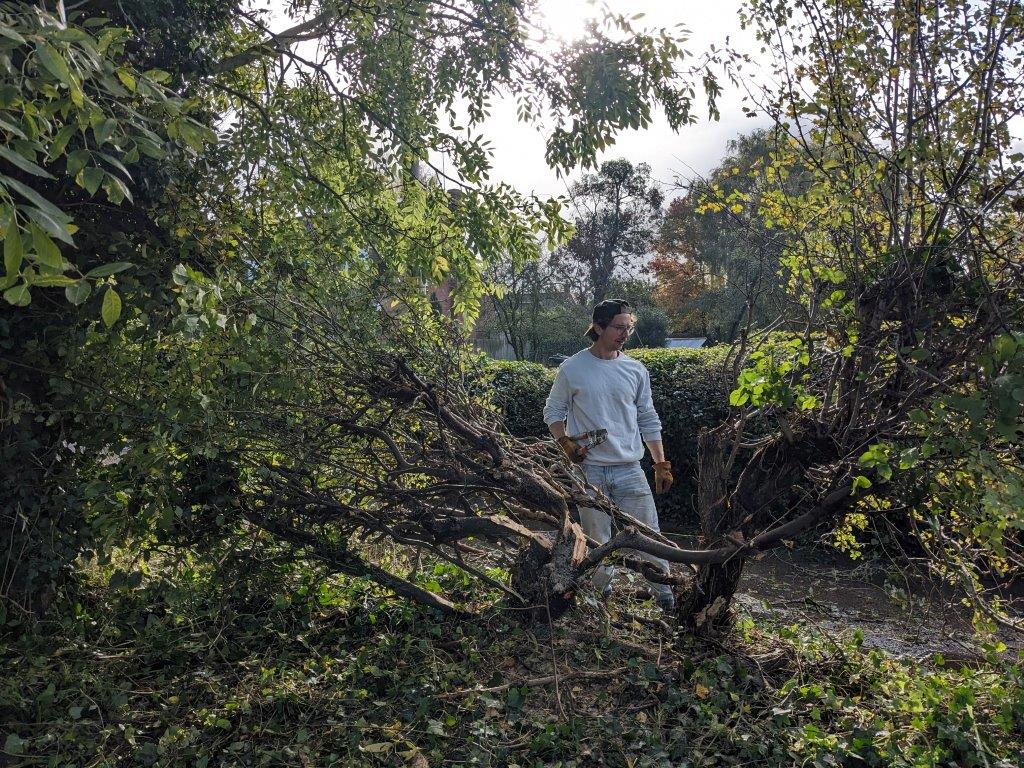Thinking of planting a hedge? All the guidance you need is here
The benefits that hedgerows provide for biodiversity are endless. In a heavily fragmented landscape, hedgerows link up valuable habitats for wildlife such as woodland, grassland and ponds. This connects populations that would otherwise be isolated and vulnerable, and allows relocation to better habitat. Over 100 priority species utilise hedgerows for a variety of reasons such as for shelter, food, or navigation. Birds and small mammals nest in hedges, bats use hedgerows as foraging grounds and navigational markers, and reptiles hide in the long tussocky margins associated with hedgerows.

The benefits that hedgerows provide for biodiversity are endless. In a heavily fragmented landscape, hedgerows link up valuable habitats for wildlife such as woodland, grassland and ponds. This connects populations that would otherwise be isolated and vulnerable, and allows relocation to better habitat. Over 100 priority species utilise hedgerows for a variety of reasons such as for shelter, food, or navigation. Birds and small mammals nest in hedges, bats use hedgerows as foraging grounds and navigational markers, and reptiles hide in the long tussocky margins associated with hedgerows.
Hedgerows do a lot for us too! They provide flood relief, modulate noise, water, and air pollution, and alleviate climate change by sequestering carbon and storing it in their woody growth, roots, and the soil's organic matter beneath the ground.
Within a farming context, hedgerows have the potential to increase crop yield as they support diverse populations of pollinators, are a haven for predatory and parasitic insects reducing crop pests. They also act as a buffer during high winds, preventing soil erosion and damage to crops. Hedgerows can increase livestock growth rates, survival rates and milk yield as they provide shade and shelter in extreme weather.
Assessing the condition of a hedgerow is important to understand what management it requires. The People’s Trust for Endangered Species (PTES) have developed two ways in which you can survey your hedgerow (PTES Hedgerow Surveying Techniques). The Great British Hedgerow Survey is for volunteers, community groups, and wildlife groups. The HealthyHedgerows App is for landowners and farmers, providing rapid assessment and instant management options.
Both surveys take approximately 20 minutes and can be done any time of year. The results will provide instant tailored management advice which not only provides the surveyor with an appreciation of the hedgerow habitat they are interested in, but also paints a picture of the condition of our hedgerows nationally.
1) The Great British Hedgerow Survey - The Great British HedgerowSurvey (ptes.org)
2) Hedgerows App - Healthy Hedgerows App(ptes.org)

Plant your hedgerow between November and March when the plants are dormant. Never plant out when the ground is frozen or too wet as this will drastically reduce the survival rate of the whips due to root damage.
Sourcing Plants
A good rule of thumb to follow is to source native tree species that occur in existing hedgerows within the area. These species will be better adapted to local climatic and soil conditions giving your hedgerow the best chance of establishing.
Try and source hedgerow plants of local provenance as utilisation of foreign strains are causing a decline in the genetic integrity of our hedgerows nationally. You can even propagate these heritage strains yourself by collecting seeds from local ancient hedgerows.
Species Mix
A habitat with floral diversity has the potential to support more wildlife. Aim to incorporate five or six different tree species that flower and fruit at different times of the year within your species mix. This ensures a meal throughout the seasons for those that feed on your hedgerow. For example, during autumn, hazel dormice will feed on nuts, seeds, and berries to fatten up for hibernation and feed on pollen and nectar when they arise in the spring.
A typical species mix can look like something like this:
).png)

Preparing the ground
Depending on the site, prepare the ground prior to planting by strimming to remove vegetation (brambles etc.) which will give you easy access to the ground.
Heeling in
Organise your whip deliveries a few days prior to planting to allow for any supplier delays. Typically, whips are purchased in bare root form which have the potential to dry out. To keep roots moist, make sure whips are kept in their bags until they are placed in the ground, and are stored for no longer than two or three days. Think about a location where you can heel in your whips in case the weather scuppers your planting day plans. Heeling in is a method for temporarily storing your plants before planting out in their final location - here you temporarily plant your hedging in a (well-drained) hole or trench, and cover over with earth, compost or sand.
Planting out
Plant five or six whips of the same species per metre in a single or double row using the notch/slit planting method (Hedge Planting with Nigel Adams - video below). For a single row, make sure whips are approximately 30 cm apart. For a double row, plant whips in a zig zag formation with a 50 cm gap between whips on the same row and a 45 cm gap between parallel rows. You could fashion your own hedgerow measuring device using a long piece of rope and coloured tape to indicate the spacings. If there are populations of deer or rabbit within the area, consider protecting the young plants with a tree guard.
Mulching
Give your brand-new hedge a thick mulch with wood chip, grass clippings, cardboard, sheep fleece or jute sacking. This will aid water retention and help to suppress weeds.
Aftercare
To learn more about how to care for your new hedgerow have a read of ‘Caring for your new hedge’.
For more detailed advice on hedgerow planting see The Tree Council's Planting Guidance
MulchingGive your brand-new hedge a thick mulch with wood chip, grass clippings, cardboard, sheep fleece or jute sacking. This will aid water retention and help to suppress weeds.AftercareTo learn more about how to care for your new hedgerow have a read of ‘Caring for your new hedge’.For more detailed advice on hedgerow planting seeThe Tree Council's Planting Guidance
Hedgerows are often composed of tree species that will grow into a line of trees if left to their own devices. Trimming is necessary to maintain a bushy and dense hedgerow, however over-trimming can cause a loss of hedgerow over time. Cutting the hedgerow back to the same place every year will inflict stress on the plant which results in the gradual death of the hedge plants. So, it is important to get your trimming right.
Trim your hedgerow incrementally every two or three years and late in winter to allow berry and nut availability for as long as possible. Never trim between March 1st and August 31st as this is bird breeding season. Take a look at ‘Increasing the value of hedges for wildlife with relaxed cutting regime’ (CEH) to find out the best trimming regime for you!
There will become a point when your hedgerow needs rejuvenating which can be done by hedgelaying or coppicing. Both methods involve some sort of cutting at the base of a hedge plant. New growth will begin from the part of the stem that has been cut which results in bushier denser growth close to the ground. You can follow The Adams Hedgerow Management Scale and the Hedgerow Management Cycle to learn when you need to lay or coppice your hedge.

Laying a hedge

A finished hedge
Hedgerow trees are a great feature to have in your hedgerow. They support masses of wildlife, function as sing posts and territory markers and can harbour dead wood habitat in some cases. You could establish a tree in your hedgerow “for free” by letting one of your hedgerow plants grow in to one.

.jpeg)
Managing a dense grassy, wildflower margin 2m + wide at the base of your hedgerow will protect their roots, provide overwintering and breeding locations for invertebrates and a sheltered route for animals navigating the hedgerow. If you can, only cut this margin once every five years and late in summer after plants have re-seeded. If scrub starts to develop, tackle the suckers as necessary.
For more information on hedgerow management see Hedgelink Management Advice and Top 12 management principles.
If you’ve just planted a new hedge, learn more about how to manage it here: ‘Caring for your new hedge’
The cost of hedge planting can add up and become quite costly. There are a variety of different funding options available that cater for a range of projects so, look below to find something that suits you.
Wild Oxfordshire also partners with CPRE to plant hedgerows across the county – get in touch with us to see if we can provide free hedgerows, canes and spirals for your project.